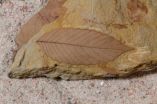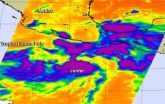(Press-News.org) This release is available in Japanese.
A University of Tokyo research group has discovered that pentatraxin 3 (PTX3), a protein that helps the innate immune system target invaders such as bacteria and viruses, can reduce mortality of mice suffering from sepsis. This discovery may lead to a therapy for sepsis, a major cause of death in developed countries that is fatal in one in four cases.
Professor Takao Hamakubo's group at the Department of Quantitative Biology and Medicine, Research Center for Advanced Science and Technology (RCAST), have shown that PTX3 forms strong bonds with histones and partially unfolds, leading to a disordered coaggregation of histone and PTX3 and protecting human endothelial cells from damage. Further, mice treated with PTX3 recovered from sepsis, showing that treatment with PTX3 is a possible therapy not only for this condition, but also for 'sterile' sepsis induced by trauma, burn, ischemia, or hemorrhage, which also result in inflammation.
Histones are small proteins around which DNA is wound up in chromosomes, but once they are released into the extracellular plasma, they are toxic to the endothelial cells that line the blood and lymph vessels of the circulatory system. They also trigger inflammation, the innate immune system's standard defensive response to infection. The team had reported previously in 2012 that extracellular histones bind to PTX3 in plasma from septic patients, which led to the hypothesis of a protective role of PTX3 in sepsis against extracellular histones.
"PTX3 interacts with many proteins of foreign origin or the body's own inflammation-related proteins," explains Professor Hamakubo. "Thus PTX3 is recognized as the soluble arm of a pattern recognition receptor, an essential part of innate immune system that recognizes pathogens. We observed extraordinarily rapid and tight interaction with histone, which we recognized as coaggregation after a variety of experiments. To our knowledge, this is the first report of coaggregation between different proteins that is protective to the host. We expect our findings lead to a novel understanding of protein interaction and that they will benefit people who are suffering from severe illness."
INFORMATION:
Journal article
Kenji Daigo, Makoto Nakakido, Riuko Ohashi, Rie Fukuda, Koichi Matsubara, Takashi Minami, Naotaka Yamaguchi, Kenji Inoue, Shuying Jiang, Makoto Naito, Kouhei Tsumoto, Takao Hamakubo, "Protective effect of the long pentraxin PTX3 against histone-mediated endothelial cell cytotoxicity in sepsis," Science Signaling (forthcoming: 16 September 2014).
Links
Department of Quantitative Biology and Medicine
Research Center for Advanced Science and Technology
The University of Tokyo
Contact information
Professor Takao Hamakubo
Department of Quantitative Biology and Medicine, Research Center for Advanced Science and Technology, The University of Tokyo
Email: hamakubo@qbm.rcast.u-tokyo.ac.jp
Tel/fax: +81-3-5452-5231
RCAST press officer & contact information
Ikuko Murayama
Public Relations and Information Office
Research Centre for Advanced Science and Technology, The University of Tokyo
Email:press@rcast.u-tokyo.ac.jp
TEL: +81-3-5452-5424 FAX: +81-3-5452-5306
A novel therapy for sepsis?
2014-09-16
ELSE PRESS RELEASES FROM THIS DATE:
Meteorite that doomed the dinosaurs helped the forests bloom
2014-09-16
66 million years ago, a 10-km diameter chunk of rock hit the Yukatan peninsula near the site of the small town of Chicxulub with the force of 100 teratons of TNT. It left a crater more than 150 km across, and the resulting megatsunami, wildfires, global earthquakes and volcanism are widely accepted to have wiped out the dinosaurs and made way for the rise of the mammals. But what happened to the plants on which the dinosaurs fed?
A new study led by researchers from the University of Arizona reveals that the meteorite impact that spelled doom for the dinosaurs also decimated ...
The genetics of coping with HIV
2014-09-16
We respond to infections in two fundamental ways. One, which has been the subject of intensive research over the years, is "resistance," where the body attacks the invading pathogen and reduces its numbers. Another, which is much less well understood, is "tolerance," where the body tries to minimise the damage done by the pathogen. Now an elegant study using data from a large Swiss cohort of HIV-infected individuals gives us a tantalising glimpse into why some people cope with HIV better than others.
The authors find that tolerance varies substantially between individuals, ...
Point-of-care CD4 testing is economically feasible for HIV care in resource-limited areas
2014-09-16
A new point-of-care test to measure CD4 T-cells, the prime indicator of HIV disease progression, can expedite the process leading from HIV diagnosis to antiretroviral therapy (ART) and improve clinical outcomes. Now a study by Massachusetts General Hospital (MGH) investigators, working in collaboration with colleagues in Mozambique and South Africa, indicates that routine use of point-of-care CD4 testing at the time of HIV diagnosis could be cost effective in countries where health care and other resources are severely limited. Their analysis is being published in the ...
Nanoribbon film keeps glass ice-free
2014-09-16
Rice University scientists who created a deicing film for radar domes have now refined the technology to work as a transparent coating for glass.
The new work by Rice chemist James Tour and his colleagues could keep glass surfaces from windshields to skyscrapers free of ice and fog while retaining their transparency to radio frequencies (RF).
The technology was introduced this month in the American Chemical Society journal Applied Materials and Interfaces.
The material is made of graphene nanoribbons, atom-thick strips of carbon created by splitting nanotubes, ...
Journal of Clinical Psychiatry: Long-term benefit of NeuroStar TMS Therapy in depression
2014-09-16
Malvern, Pennsylvania, September 16, 2014 – Neuronetics, Inc., today announced that results of a study designed to assess the long-term effectiveness of NeuroStar TMS Therapy in adult patients with Major Depressive Disorder (MDD) who have failed to benefit from prior treatment with antidepressant medications, were published online in The Journal of Clinical Psychiatry. The study found that TMS treatment with the NeuroStar TMS Therapy System induced statistically and clinically meaningful response and remission in patients with treatment resistant MDD during the acute phase ...
NASA spots center of Typhoon Kalmaegi over Hainan Island, headed for Vietnam
2014-09-16
NASA's Aqua satellite saw Typhoon Kalmaegi's center near northern Hainan Island, China when it passed overhead on September 16 at 06:00 UTC (2 a.m. EDT). Hours later, the storm crossed the Gulf of Tonkin, the body of water that separates Hainan Island from Vietnam, and was making landfall there at 11:30 a.m. EDT.
The Moderate Resolution Imaging Spectroradiometer or MODIS instrument aboard Aqua captured a picture of the typhoon that shows the center near the northern end of Hainan Island, China, while the storm stretches over the mainland of southeastern China, east into ...
Computerized emotion detector
2014-09-16
Face recognition software measures various parameters in a mug shot, such as the distance between the person's eyes, the height from lip to top of their nose and various other metrics and then compares it with photos of people in the database that have been tagged with a given name. Now, research published in the International Journal of Computational Vision and Robotics looks to take that one step further in recognizing the emotion portrayed by a face.
Dev Drume Agrawal, Shiv Ram Dubey and Anand Singh Jalal of the GLA University, in Mathura, Uttar Pradesh, India, suggest ...
Newborn Tropical Storm Polo gives a NASA satellite a 'cold reception'
2014-09-16
The AIRS instrument aboard NASA's Aqua satellite uses infrared light to read cloud top temperatures in tropical cyclones. When Aqua passed over newborn Tropical Storm Polo off of Mexico's southwestern coast it got a "cold reception" when infrared data saw some very cold cloud top temperatures and strong storms within that hint at intensification.
Polo formed close enough to land to trigger a Tropical Storm Watch for the southwestern coast of Mexico. The watch was issued by the government of Mexico on September 16 and extends from Zihuatanejo to Cabo Corrientes, Mexico. ...
EARTH Magazine: The Bay Area's next 'big one could strike as a series of quakes
2014-09-16
Alexandria, Va. — Most people are familiar with the Great 1906 San Francisco Earthquake and are aware of the earthquake risk posed to the Bay Area — and much of California — by the San Andreas Fault. Most people are not aware, however, that a cluster of large earthquakes struck the San Andreas and quite a few nearby faults in the 17th and 18th centuries. That cluster, according to new research, released about the same amount of energy throughout the Bay Area as the 1906 quake. Thus, it appears that the accumulated stress on the region's faults could be released in a series ...
New research decodes virus-host interactions in ocean dead zones
2014-09-16
A complex web of interaction between viruses, bacteria, and their environment is becoming ever more untangled by a growing international collaboration between Matthew Sullivan, associate professor in the University of Arizona's Department of Ecology and Evolutionary Biology and Steven Hallam from the University of British Columbia in Vancouver, Canada.
"Bacteria are drivers of nutrient and energy cycles that power the earth," Sullivan said. "As the climate is changing, so are the environments these bacteria live in, and they in turn loop back to impact their environments. ...




